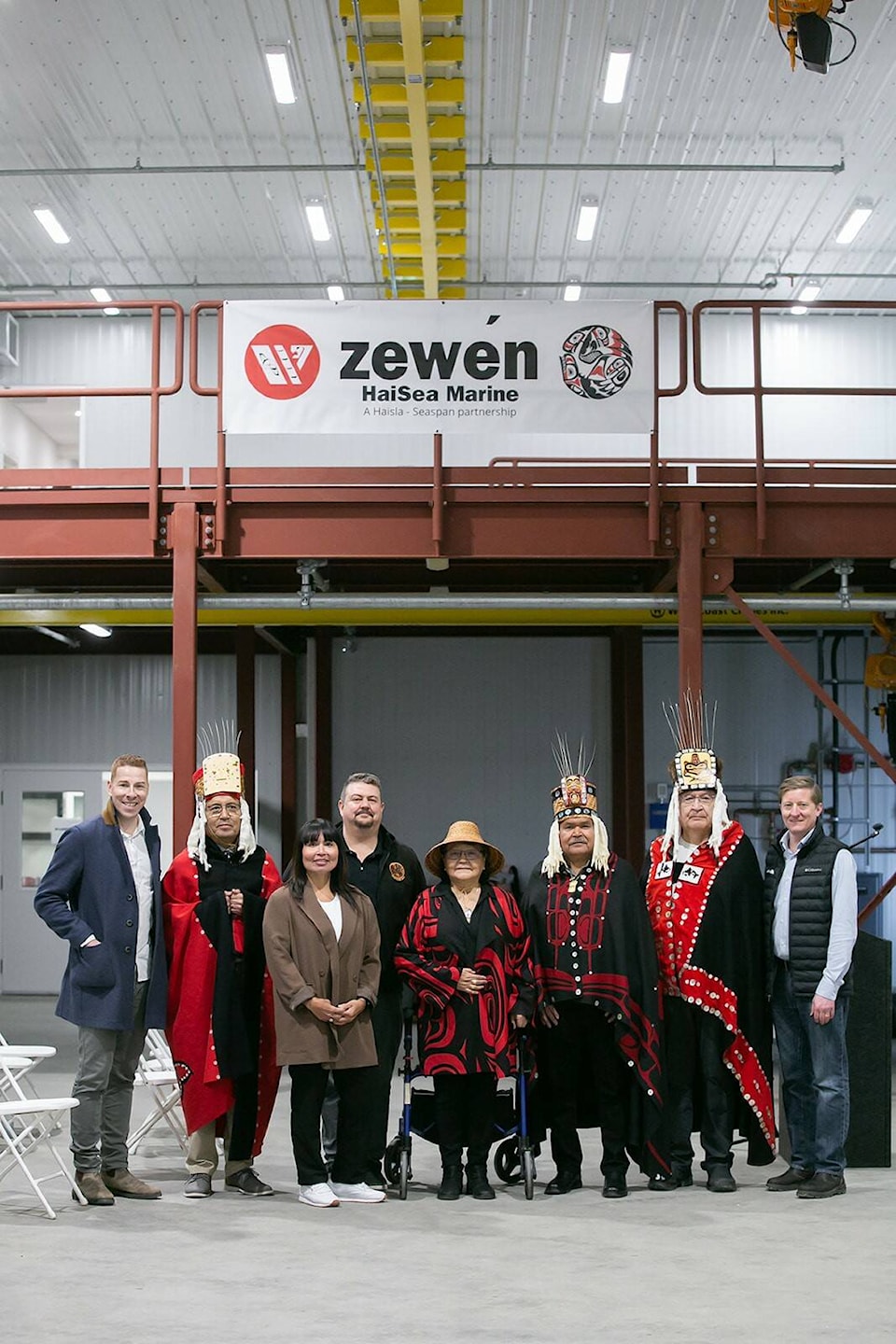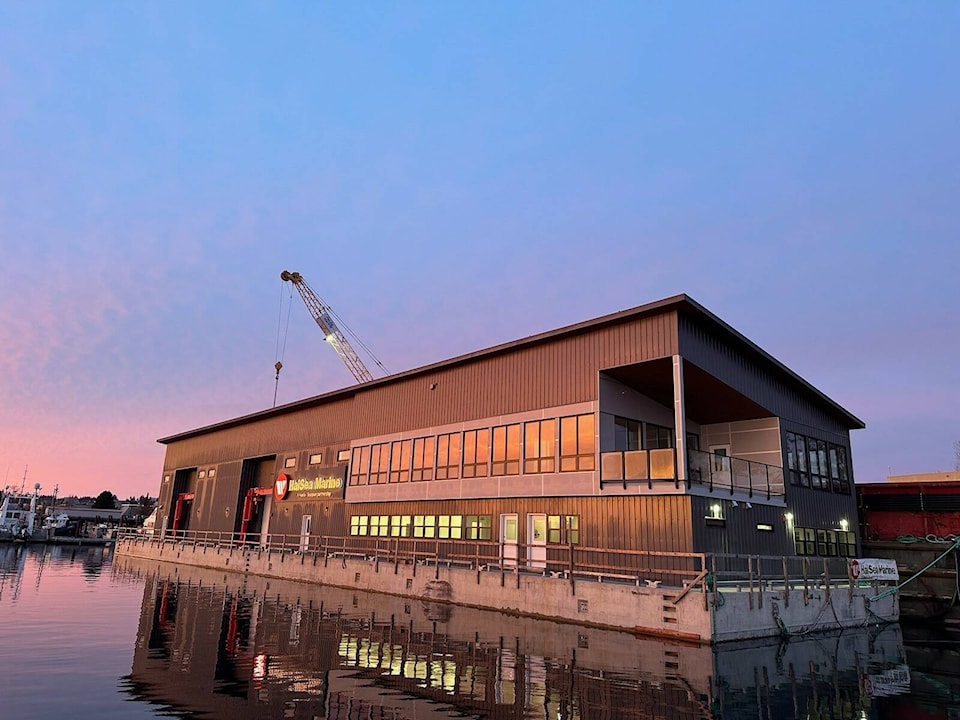HaiSea Marine celebrated the completion of its floating operations facility March 13, marked by a blessing and naming ceremony in the builder’s Campbell River warehouse. The company is now awaiting its transport to the Douglas Channel in late May where it will serve as the nerve centre for what’s described as the world’s greenest fleet of harbour tugs, purpose built for LNG Canada’s export operations.
The facility was named “Zewén,” the Haisla word for Coho. Haisla Hereditary Chief Basil Grant inspired the name, in honour of the generations of his family members who have fished for coho in the precise location where it will be stationed.
“When HaiSea was still in the idea and planning phase, we challenged Seaspan to create something different,” Haisla Nation Chief Councillor Crystal Smith said. “[We wanted] an environmentally friendly tugboat fleet to ply our waters, job opportunities for Haisla Nation members and our local First Nations neighbours, and, lastly, we wanted diversity and inclusion to be part of HaiSea’s culture. As we celebrate the naming of the Zewén facility, it is clear that our shared vision of diversity, inclusion, and environmental innovation is coming to fruition.”
The unveiling at Pacific Marine Construction was attended by delegates from LNG Canada, the local Wei Wai Kum First Nation, Haisla Nation and Seaspan Marine, the minority owner in HaiSea with the Haisla Nation.
The Zewén is designed to withstand Kitimat’s extreme tidal range, offering a large workshop and common spaces, including a gym, to accommodate eight shore-based personnel during normal working hours. Its design emphasizes inclusivity and safety.
“Zewén features single enclosed bathrooms and changing rooms, which in 2024 is the baseline expectation, but it’s revolutionary for a centuries-old industry that was not built for everyone. The unveiling and naming of Zewén is a celebration of how we are doing things differently,” Jordan Pechie, Seaspan’s senior vice president said.
As HaiSea awaits the trasport of the facility, all but one of the tugs have arrived from their Turkish manufacturer, Sanmar Shipyards, to Seaspan’s North Vancouver shipyard.
The fleet will consist of three ElectRA 2800 tugs, celebrated as the world’s first electric harbour tugs, with an innovative propulsion system to meet the unique requirements of assisting LNG carriers on and off the berths. Additionally, two dual fuel (LNG and diesel) RAstar 4000-DF escort tugs, are expected to be the west coast’s most powerful, according to HaiSea.
It’s unclear when the fleet will make their way north. In the meantime the electric tugs are performing unspecified jobs in Vancouver harbour.
Once in service for LNG Canada ships, the vessels will also provide transportation of material and personnel, marine emergency response, firefighting and oil pollution response in the Douglas Channel.
HaiSea expects to create about 70 maritime jobs, alongside six onshore roles. With an initial contract valued at $500 million from LNG Canada spanning 12 years, HaiSea envisions the Zewén playing a pivotal role in its operations well beyond this period, aligning with its strategic objective for sustained service over several decades.

